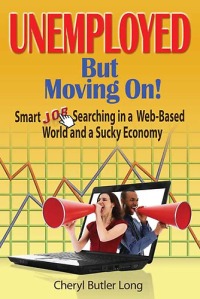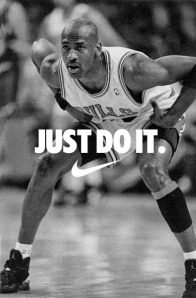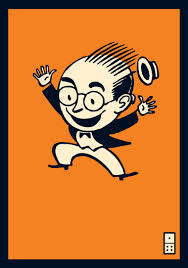Cheryl Butler Long, in her book, Unemployed but Moving On, identifies herself as a “Workforce Development Specialist for a mid-western state” (I believe Missouri, based on the references in an appendix). She has been doing workforce development longer than I have, and she has worked with more job seekers than I have. She writes with a blunt, sarcastic wit of someone who has seen and experienced a lot.
I do have issues with the negativity of the tone. Basically, Ms. Long is saying (this is not a quote), “The economy sucks, there are not enough jobs for everyone. You probably won’t get hired, but if you follow my advice, you might have a shot.”
Now, the economy does suck. There are more job seekers than there are jobs. And the jobs that are available are not equal to the jobs that were lost. However, I know that there are jobs out there for those who are smart about their job search, and are willing to put forth the effort — which does not include simply submitting your resume to hundreds of online job opportunities or complaining about how bad the job market is. I have been hired three times since the Great Recession started in 2009, I’ve enjoyed each of the jobs I’ve held, and currently love what I do.
Despite the negative sarcastic tone, I find myself agreeing with much (but not all) of what Ms. Long says: decide what you want to do, make sure your resume includes all the appropriate key words, always attach a cover letter, and prepare for the interview.
Ms. Long includes a very helpful chapter on how to deal with criminal convictions, which I rarely see addressed in any job-search book.
She says in one chapter that she was in junior high during the Beatles’ invasion, which by my math means she is in her mid-60s (which, dear readers, is why you never go back more than 10 years on a resume!). This may explain why she is fascinated with computers, spending three pages talking about how the world is different now thanks to computer technology.
She also includes a chapter talking about how one is likely to face discrimination if over age 40, female, gay, or speak with a non-English accent. Sadly, she offers no advice other than to expect it.
Overall, while I agree with much of the book, it is difficult for me to recommend it. The sarcastic negative tone might work when speaking to a group, when you have immediate feedback about how the group is accepting it. In writing, absent external feedback, there is no uplift of mood.
I deal with hope. I am confident that there are jobs available for those who are smart with their job search and put forth the effort.
Success doesn’t come to you. You go get it.
Long, Cheryl Butler. Unemployed but Moving On! Smart Job Searching in a Web-Based World and a Sucky Economy. Manasas Park: Impact Publications, 2012. Print.
I want to hear from you. Connect with me on Facebook, LinkedIn and Twitter, or leave a comment below, and let me know what you think!


